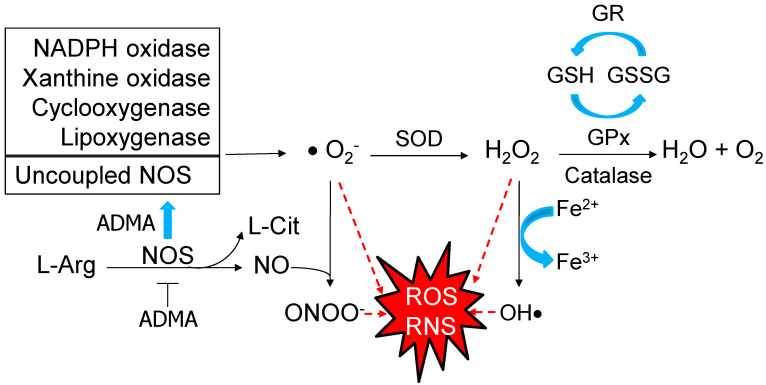Figure 1.
Schematic representation of the pathways producing reactive oxygen species (ROS)/reactive nitrogen species (RNS) and key defensive antioxidant enzymatic systems. Several enzymes produce superoxide radical (O2−), such as NADPH oxidase, xanthine oxidase, cyclo-oxygenase, lipoxygenase, and uncoupled nitric oxide synthase (NOS). NOS catalyzes L-arginine (L-Arg) to produce nitric oxide (NO) and L-citrulline (L-Cit). While being inhibited by asymmetric dimethylarginine (ADMA), uncoupled NOS generates superoxide instead of NO. High level of NO can interact with superoxide to form peroxynitrite (ONOO−). Red dashed arrow lines indicate O2−, hydrogen peroxide (H2O2), hydroxyl anion (OH−), and peroxynitrite (ONOO−) are key elements of ROS/RNS. Conversely, excessive ROS/RNS can be counterbalanced by various antioxidant enzymes, such as superoxide dismutase (SOD), catalase, glutathione peroxidase (GPx), and glutathione reductase (GR). GPx converts reduced glutathione (GSH) into oxidized glutathione (GSSG). The generated GSSG is reduced to GSH with consumption of NADPH by GR.

